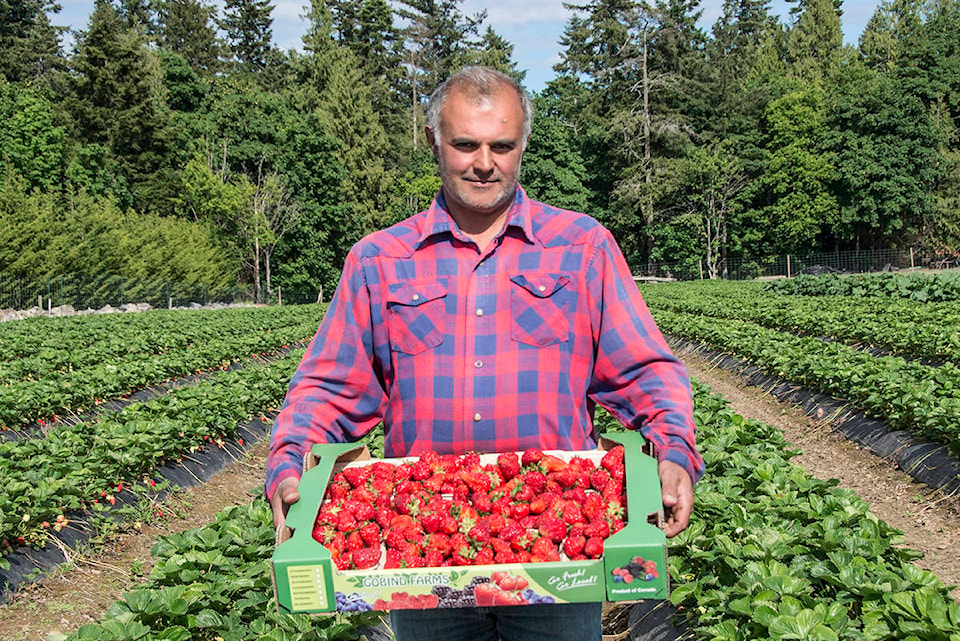Like a beacon of summer, roadside advertisements for berries and veggies have begun popping up across rural Greater Victoria. But behind the scenes, some farmers are reeling from the fallout of the COVID-19 pandemic.
Border disruptions have created a shortfall of 8,000 temporary workers across the province, according to Agriculture Minister Lana Popham, and while some smaller, market-focused farms have gone unscathed, others are feeling the labour pinch.
Satnam Dheensaw of Gobind Farms in Central Saanich has already plowed over a field of kale he estimated to be worth close to $25,000 because he didn’t have the hands needed to harvest it. He’s reduced strawberry planting by 50 per cent and anticipates further losses as the season continues.
“Our usual guys that have been here for seven or eight years still haven’t arrived,” he said. “It’s difficult when they are trained on everything and [know] how the operation runs day-to-day.”
The foreign workers who do arrive are quarantined for 14 days in accommodation paid for by the province. Farmers still have to pay their wages during that time, but Dheensaw’s concerns aren’t about pay – by next week he’ll be short 20 workers, and the need only rises over the summer months.
READ ALSO: Greater Victoria farmers hopeful despite strain of COVID-19 pandemic
During peak harvest, Dheensaw has roughly 45 workers tending to about 90 acres of land. On May 28 he had only 16, and the new hires still need training.
“You can burn up the whole day just training people and re-training people,” he said. “We’re working 16-hour days just to try to keep up.”
And hiring for the physically-demanding, outdoor job with long hours and a steep learning curve has been challenging, he added, speculating that the Canada Emergency Response Benefit – offering $2,000 a month in benefits – may be more appealing to people who might otherwise look for seasonal work.
Dheensaw says it takes about two local workers to match the productivity of one trained foreign worker.
“How do you market your prices? How do you juggle that? If you put your prices up, the stores say its too expensive,” he said. “When you have strawberries ready, you need a lot of people. Every berry is picked by hand, it’s not machine-harvested.”
Rob Galey of Galey Farms echoes Dheensaw’s concerns. The potatoes, berries and carrots farm only has about half the number of workers it normally would by this time in the year.
Galey said he’s also hiring locals, but he faces some of the same problems.
“The foreign workers have been coming for years,” he said. “With the locals, I have to start training one person at a time … We have found some great locals and we’ll be keeping them all year but we’re just going to have to do our very best to get the crops off. All you can do is your very best.”
On May 28 the province launched a new website marketing agriculture and food production jobs.
For Dheensaw, it may be too little, too late.
“Towards fall, I think there’s going to be a shortage of food,” he said. “It’s a very stressful time.”
